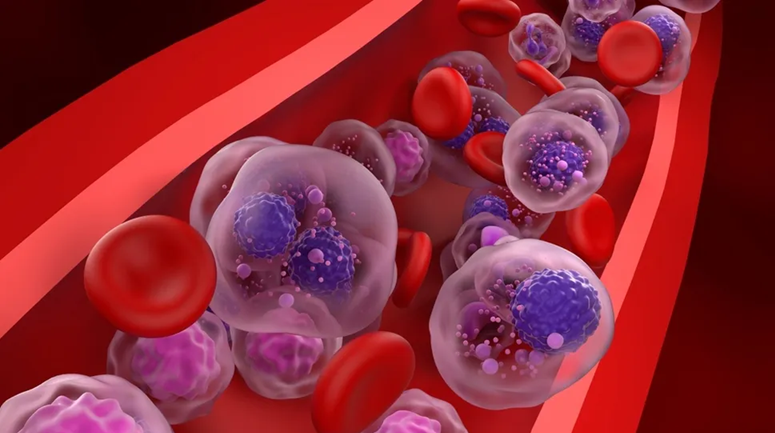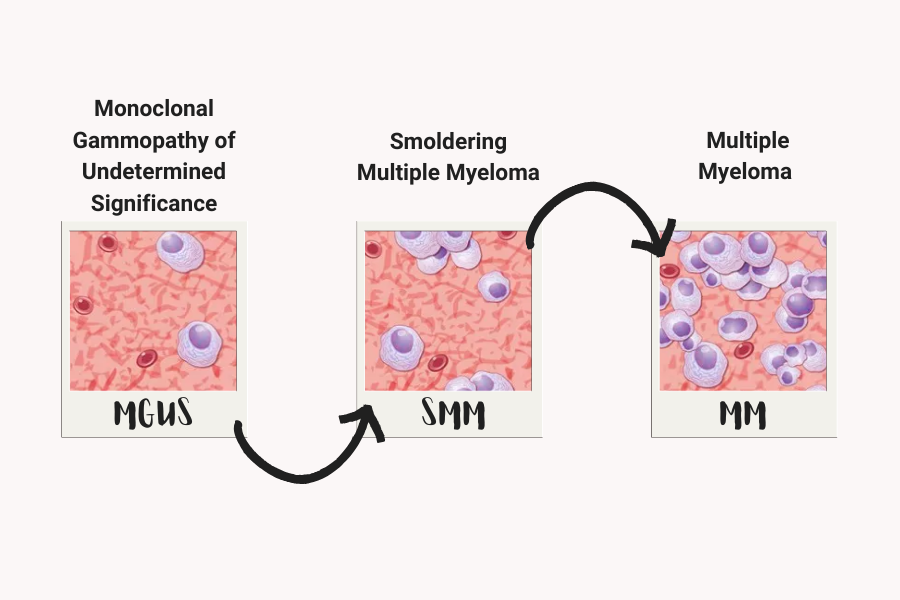Multiple Myeloma

Understanding Multiple Myeloma
Multiple Myeloma is a cancer of plasma cells, a type of white blood cell found in the bone marrow. Healthy plasma cells help fight infection, but when they become cancerous, they crowd out normal blood cells. This can weaken bones, damage kidneys, and make it harder for the immune system to protect the body. Cancerous plasma cells also create an abnormal protein called M protein, which is a key sign of multiple myeloma.
Researchers have broken down the disease progression into three stages:

Photo cards of progression of multiple myeloma from monoclonal gammopathy of undetermined significance, to smoldering multiple myeloma, to multiple myeloma.
Key Facts About Multiple Myeloma
- How common is it? About 35,000 people in the U.S. are diagnosed with multiple myeloma each year. It is most common in African American men over 45, who are twice as likely to develop and die from the disease compared to white individuals.
- Who is at risk? While multiple myeloma is not inherited, some factors increase the risk. It is more common in people over 60, African Americans, and those with a family history of blood cancers.
- Living with Multiple Myeloma: Treatments have come a long way! Thanks to medical advancements, about 61% of people diagnosed between 2014 and 2020 lived at least five years after their diagnosis.
Common Symptoms of Multiple Myeloma
- Bone pain and weakness, especially in the back or ribs.
- Feeling very tired or weak, often due to low blood cells (anemia).
- Getting sick often or taking longer to recover because the immune system is weaker.
- Bruising easily or bleeding longer than usual due to low platelet levels.
- High calcium levels, which can cause confusion, nausea, or feeling very thirsty.
- Kidney problems, which may be caused by abnormal proteins in the blood and urine.
If you or someone you know has these symptoms, see a doctor as soon as possible.
What You Need to Know
Resources
Multiple Myeloma Awareness Social Media Messages
Access and share downloadable educational materials to help spread awareness. For any queries on how to further collaborate, please email us: coe@unmc.edu